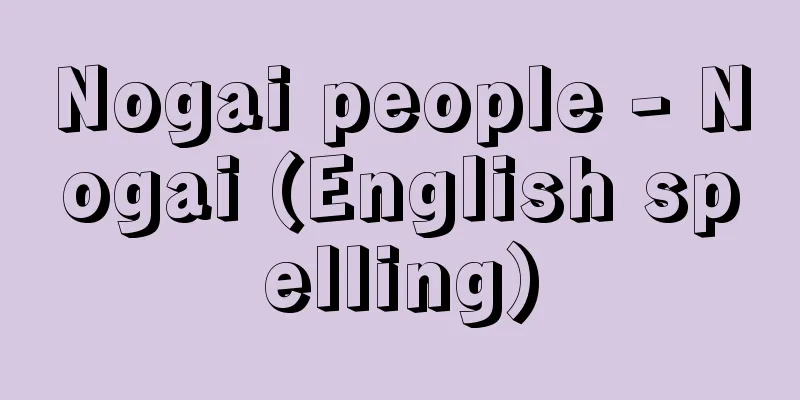Nagoya obi - Nagoya obi

|
A type of women's obi. It is a braided obi used from the end of the Muromachi period to the beginning of the Edo period, and is said to have been named after the place where it was made in Nagoya, Kyushu, but it is also sometimes called Nagoya obi, so it is not certain. Silk thread is spun into a ball and tassels are attached to the end, which are wrapped around the waist in multiple layers and tied down at the back or side. It comes in a variety of colors, including white, red, and dyed separately. Source : Heibonsha Encyclopedia About MyPedia Information |
|
女帯の一種。室町末期〜江戸初期に用いられた組帯で,九州の名護屋で作られたのでこの名があるといわれるが,名古屋帯と表されることもあり,定かではない。絹糸を丸打にしてその端に総(ふさ)をつけ,腰に幾重にも巻いて後ろや脇で結び下げた。色は白,赤,染分けにしたものなど種々。
出典 株式会社平凡社百科事典マイペディアについて 情報 |
Recommend
Gyoki-yaki
〘Noun〙 Ancient gray-colored pottery scattered arou...
Pathologist
...However, when it comes to autopsies and biopsi...
Wako [city] - Wako
A city in southern Saitama prefecture. It was inco...
Iwami Province
The former name of the western half of Shimane Pr...
Fittonia verschaffeltii; mosaic plant; nerve plant
An evergreen perennial plant of the Fittonia genus...
Angle ruler - kakudochokushaku
…Various structures and materials are used depend...
K'ucumatz (English spelling) Kucumatz
...Linguistically, the indigenous Quiche language...
Sickle for cutting grass
〘 noun 〙 A sickle used to cut grass. It has a thin...
Imperial Forest Record - Ohayashicho
〘Noun〙 A ledger detailing the state of forests und...
chausson
...Add the flour and mix lightly, then transfer t...
Civil defense - minkanbouei (English spelling)
Civil defense refers to non-military defense actio...
normal coordinate system
…In fact, the equations of motion after the trans...
Adbuta Brahmana
...The fact that Indians have had an interest in ...
Construction power - Construction power
...Depending on how the concept of facilities is ...
Cascade mill
…The raw material particles used as the grinding ...









